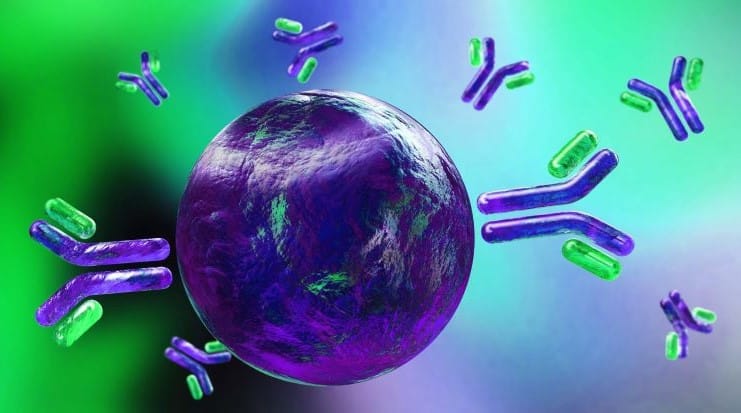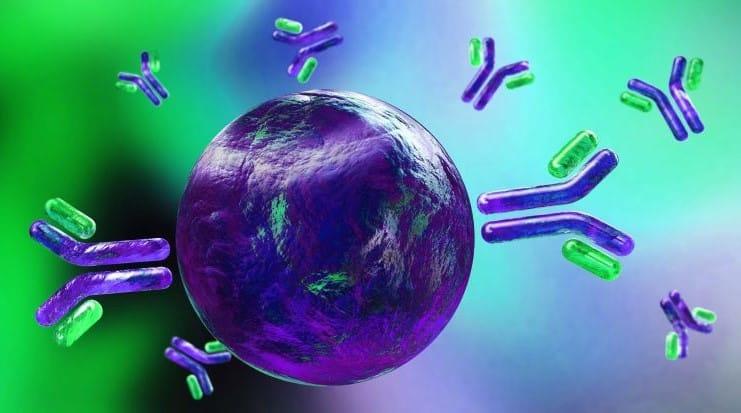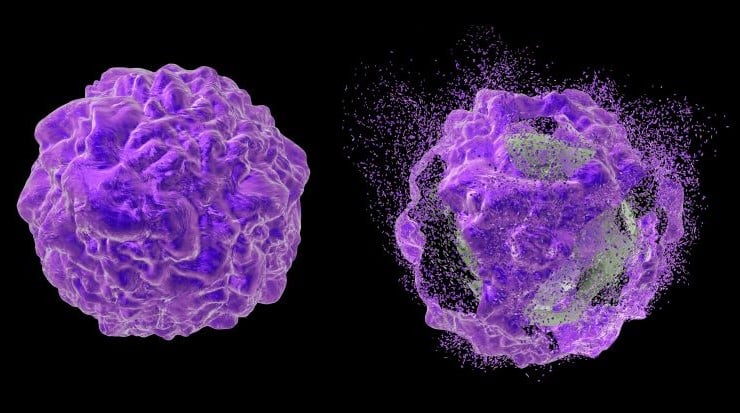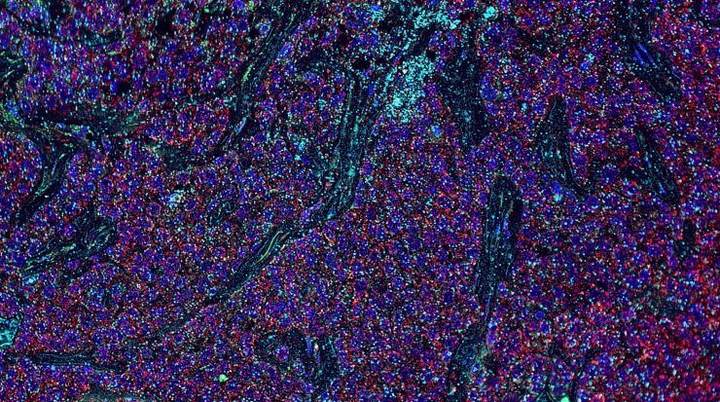Share a link
What is a Secondary Antibody?
Secondary antibodies enable analyte detection by binding to target-specific primary antibodies. They are among the most widely used reagents for scientific research and are available in a broad range of formats. A main advantage of secondary antibodies is their capacity for signal amplification, which can increase assay sensitivity. Additionally, secondary antibodies are often compatible with multiple applications.

What are the advantages of secondary antibodies?
Secondary antibodies are used for indirect detection, meaning they recognize analyte-specific primary antibodies that are already target-bound. They are produced by immunizing a host animal with an antibody from another species (e.g., goat anti-rabbit secondary antibodies are produced by immunizing a goat with rabbit antibodies), following which they are purified and can be labeled with a detection moiety such as an enzyme or fluorophore.
Because multiple secondary antibodies can bind each primary antibody, they provide signal amplification to improve researchers' chances of detecting less abundant targets.
How specific are secondary antibodies?
- Classes and Subtypes
In many cases, secondary antibodies are generated against a mixed population of immunoglobulins derived from the target species. This approach yields a secondary antibody preparation that can recognize all antibody classes (IgA, IgD, IgE, IgG, and IgM) and subtypes (IgG1, IgG2, IgG3, IgG4, IgA1, and IgA2), as well as both heavy and light chains (H and L).
It is also possible for secondary antibodies to be produced against a specific antibody class or subtype, or against only certain light chains (κ or λ), by tailoring the immunization strategy. This can provide increased flexibility for multiplexed applications by allowing several antibodies from the same species (but of different classes or subtypes) to be combined in the same experiment.
We offer a broad selection of polyclonal and monoclonal secondary antibodies, including products specific to human, mouse, and rat isotypes and subtypes.
- Avoiding cross-reactivity: Affinity purification and cross adsorption
To address potential cross-reactivities that can produce misleading results, antibody manufacturers often affinity purify and cross-adsorb secondary antibody reagents. Affinity purification involves using immobilized target antibodies for purifying target-specific secondary antibodies from a heterogeneous antibody pool (e.g., mouse IgG1 antibodies are used to affinity purify a goat anti-mouse IgG1 secondary antibody).
The purified antibody population can then be cross-adsorbed to remove any antibodies that demonstrate undesirable off-target binding, either to antibodies from another species or to antibodies of a different class or subtype. Situations where it is important to use cross-adsorbed secondary antibodies include sandwich ELISA, where the secondary antibody should not recognize and bind the antibody used for analyte capture, and IHC, where secondary antibody binding to the sample species must be avoided to ensure reliable results.
Our HRP and Alexa Fluor® conjugated secondary antibodies are cross-adsorbed against multiple species and include products for detecting mouse, rabbit, goat, human, and chicken immunoglobulins.
Secondary antibody fragmentation
While secondary antibodies have historically been supplied as whole antibody formats (e.g., whole IgG), these have more recently been complemented by antibody fragments that include Fab and F(ab')2. Because these newer formats lack the antibody fragment crystallizable (Fc) region, they eliminate the risk of non-specific secondary antibody binding to Fc receptors on immune cells (e.g., macrophages, dendritic cells, and B cells). Antibody fragments also enter cells and tissues more efficiently than whole antibody molecules due to their smaller size.
We offer extensively characterized and affinity-purified fragmented secondary antibodies with specificities to a range of species.
Applications of labeled secondary antibodies
Secondary antibodies are available conjugated to many different labels. Choosing between the different label types depends on the intended immunoassay technique and whether multiplexing is required. Antibodies labeled with enzymes such as horseradish peroxidase (HRP) are popular for methods that employ a colorimetric readout, such as ELISA or IHC, where they are used in combination with substrates like 3,3',5,5'-tetramethylbenzidine (TMB) or 3,3'-Diaminobenzidine (DAB), respectively. Enzyme-labeled secondary antibodies are also common for Western blotting, where enhanced chemiluminescence (ECL) substrates can achieve sensitivity down to the femtogram-level.
Learn more about antibody selection by visiting our How to Choose a Secondary Antibody Guide with information on host species, isotypes, cross-adsorption, fragmented antibodies, and assay compatibility.
Where secondary antibodies are labeled with fluorophores such as fluorescent proteins (e.g., allophycocyanin or R-phycoerythrin) or fluorescent dyes (e.g., Alexa Fluor® or Cyanine dyes), they enable multiplexing for applications such as immunocytochemistry (ICC) or flow cytometry, provided due care is taken with panel design. Tandem dyes (e.g., R-phycoerythrin/CY5) offer the benefit of allowing secondary antibody reagents that share the same excitation wavelength to be combined in the same flow cytometry experiment.
Secondary antibodies are also available labeled with biotin, enabling researchers to exploit the high affinity biotin-avidin/streptavidin interaction for applications such as the avidin-biotin complex (ABC) method used for signal amplification during IHC.
With over 20 different enzyme and fluorophore conjugated secondary antibodies in our product portfolio, we're sure to have a reagent that meets your needs.






